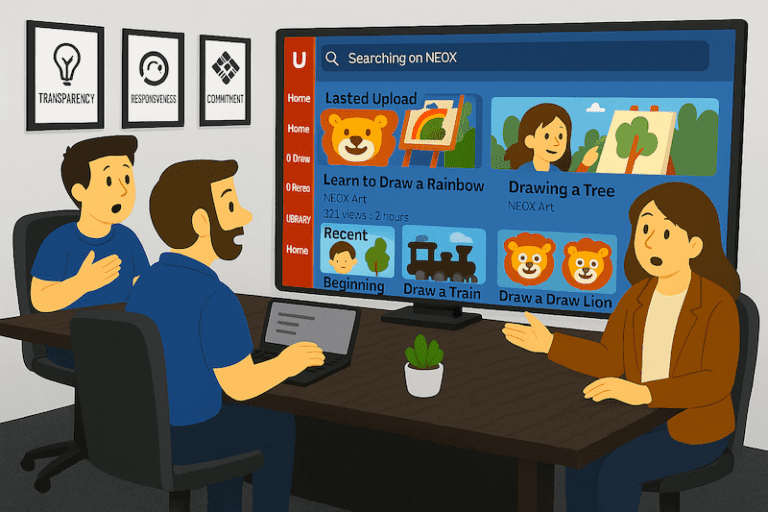Story: From Momentum to Mastery: Navigating Roadblocks in a Growing Client Relationship
As promised, I’d like to share some of the roadblocks we encountered in our journey with the client — despite this being one of our most enjoyable and collaborative projects.
We were fortunate in several ways:
✅ The client had a strong software background, which meant we spoke the same technical language.
✅ English was our common working language — helping to minimize miscommunication.
✅ The business goal was crystal clear: use the educational app to boost tablet sales and introduce a new revenue stream via premium licenses.
✅ And most importantly, the client could make decisions quickly and responded promptly, which accelerated development.
These factors helped us close the deal quickly and get off to a fast start. However, even in the most favorable conditions, roadblocks can emerge. Here are a few that came up — and how we handled them using standard project management practices:
Contact us at the Consulting WP office nearest to you or submit a business inquiry online.
Roadblocks & Solutions
1. Ambiguity in Requirements
“At the start, the specifications were high-level and fragmented. It was hard to design a scalable solution without a clear product roadmap.”
PMP-aligned Solution:
- Conduct a Progressive Elaboration Process: We treated the scope as evolving and refined it through discovery sessions and early sprint feedback.
- Use Requirement Workshops & Backlog Grooming: These helped surface long-term goals and prioritize must-have vs. nice-to-have features.
- Maintain a Living Product Backlog and make sure to regularly review and re-prioritize it with the client’s involvement.
2. Budget Sensitivity
“The client was concerned about escalating costs, especially when scope or features evolved.”
PMP-aligned Solution:
- Apply Earned Value Management (EVM): We tracked scope, time, and cost to help the client understand the ROI and budget health at each sprint.
- Use Time & Material with Cap: This hybrid approach gave flexibility without losing control over costs.
- Provide Transparent Cost Breakdown: We shared estimates by feature, including trade-offs and effort implications.
3. Hidden Scope
“What was part of the MVP vs. future releases wasn’t always clearly agreed upon.”
PMP-aligned Solution:
- Establish a Clearly Defined Scope Statement for MVP and get formal sign-off (or at least mutual agreement via email or task tracking tools).
- Use Change Request Logs: Every new feature or request was logged, reviewed, and either deferred or approved to control scope creep.
- Conduct Sprint Review Meetings with a focus on scope alignment.
4. Unexpected Technical Constraints
“Low-end devices introduced performance challenges, especially with video streaming.”
PMP-aligned Solution:
- Run a Feasibility Analysis during project initiation — especially for hardware-integrated apps.
- Perform Risk Management Planning early, including testing on target devices from day one.
- Mitigate via Technical Prototyping (we optimized video compression and used adaptive streaming).
5. Trust Gap Re-Emerges
“Even after initial trust was built, bugs or timeline slips created friction, especially with new stakeholders joining.”
PMP-aligned Solution:
- Practice Stakeholder Engagement Management: Identify new stakeholders early and realign expectations.
- Establish Transparent Communication Channels: Daily updates via Slack, weekly summaries, shared Kanban boards.
- Maintain a Risk Register to flag and proactively handle issues before they grow into trust-damaging events.
🧠 Final Thought
Even the most aligned projects can hit bumps. What matters is how quickly you recognize the friction points, communicate openly, and apply disciplined practices to overcome them. This project taught us that trust isn’t a one-time win — it’s something you re-earn in every sprint.

